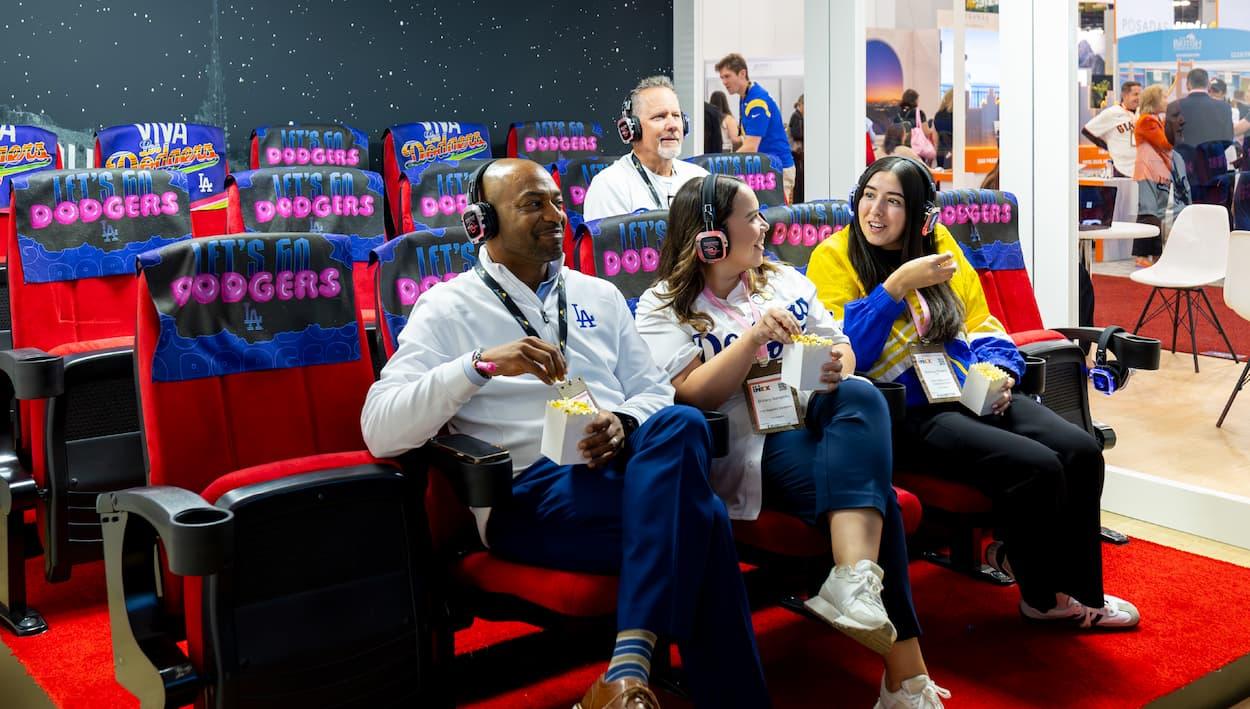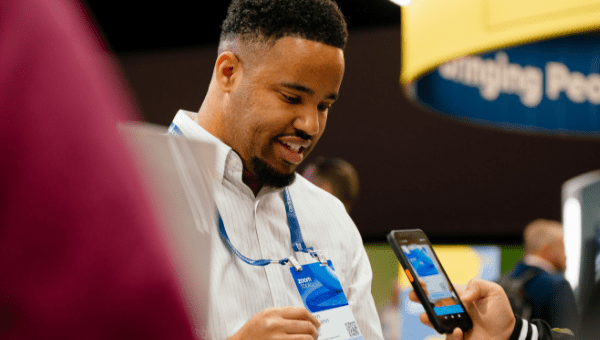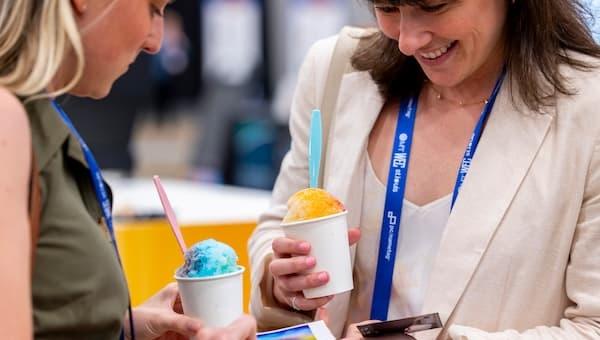AV Creative Production: The Key to Transforming Events
When most people hear “AV,” they think lights, microphones, and maybe a giant screen or two. Those are important, but they’re only part of the story.
Today’s audiences expect more than functional production; they want to be immersed, inspired, and engaged. That’s where creative production comes in.
In this FAQ, we answer the most common questions about AV creative production:
What it is, who makes it happen, and why creative production could be the secret sauce to making your next event unforgettable.
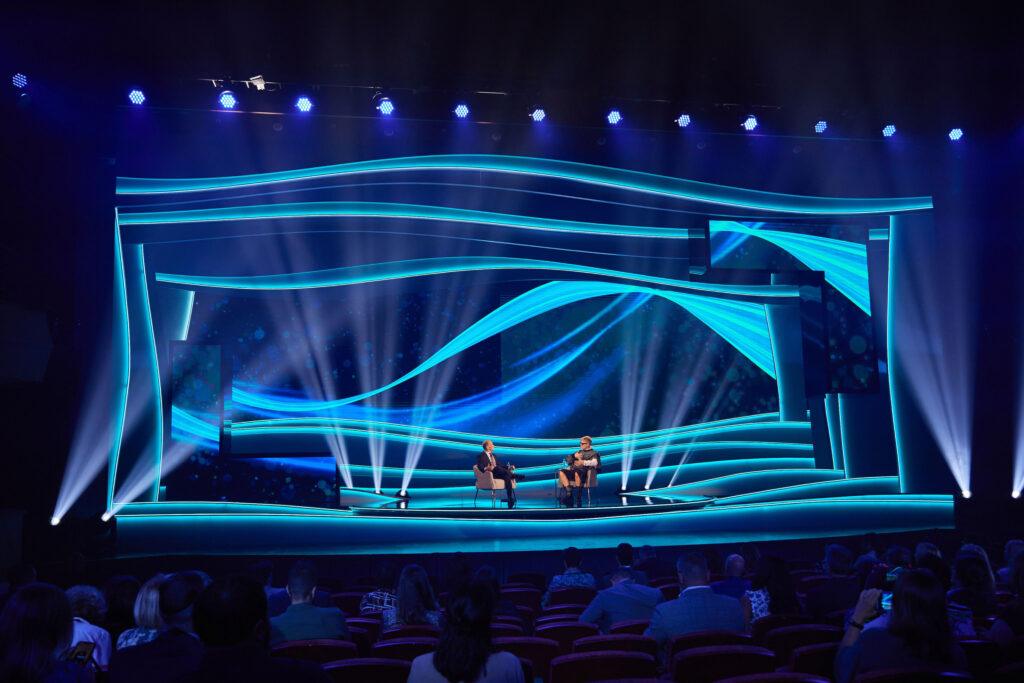
Q: What exactly is “creative production”?
Think of creative production as the difference between simply delivering a message and creating an experience. It’s the process of turning strategic ideas into impactful, visual moments that stick with audiences long after they leave.
Michael O’Brien, a creative production expert at Freeman, puts it this way:
“AV is equipment — creative production is engagement. It’s the difference between people being spoken at versus them feeling immersed in the experience.”
This means every lighting cue, scenic element, and piece of motion content is designed with purpose — to support event goals, guide audience attention, and make the experience memorable.
Q: Who are the people behind the scenes?
Creative production is a team sport. Our teams are a mix of creative and technical specialists who work together (in collaboration with the client) to bring ideas to life:
- Creative Director: Sets the overall vision and narrative.
- Art Director: Ensures design consistency and visual quality.
- Executive Producer: Bridges creative goals with logistics and budgets.
- Motion and Graphic Designers: Build animations, graphics, and presentation content.
- Scenic Designer: Creates immersive physical sets and stage environments.
- Scriptwriter: Aligns story flow with visuals and timing.
- Technical Director: Integrates all the AV elements flawlessly.
- Environmental Designer: Makes sure the overall event design is connected and consistent from a holistic perspective.
This collaboration ensures your event isn’t just technically sound but visually and emotionally impactful.
Q: How long does creative production take?
Timelines depend on the size and complexity of your event. A smaller corporate meeting with basic scenic design can often be planned in just a few weeks, while large-scale productions — like a national convention or political debate — may start 12–14 months out. Most corporate events typically require four to six months of planning to get the details right and allow for creative exploration.
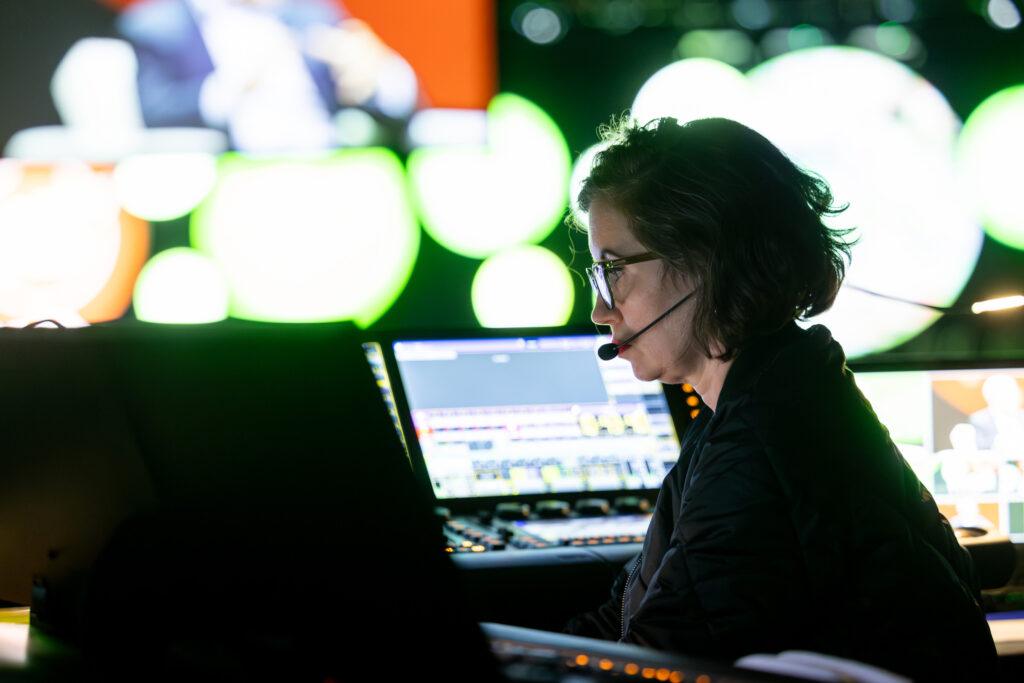
Q: How does creative production support my event goals?
Everything starts with one big question: What do you want your audience to feel, remember, or do? Once you know that, your creative production team can design the visual, emotional, and interactive moments that will support those outcomes. Engaging creative experts early in the planning process allows them to recommend strategies that align creative decisions with the event’s purpose.
Q: What creative assets are typically included?
Creative production covers a wide range of assets, including:
- Motion graphics and animations to add energy and flow between segments.
- Scenic renders including lighting designs, for previewing the look and feel of the stage and environment.
- Speaker support like polished slides and on-screen graphics.
- Brand visuals including templates, overlays, and custom iconography.
- Video content like opener videos, sizzle reels, and testimonials.
The exact mix depends on your audience’s needs, how you want to deliver the experience, and whether you want people to be inspired, informed, or both.
Q: How should I budget for creative production?
A thoughtful budget balances logistics with creativity. One approach: Allocate 70% to fixed production costs (like equipment, labor, rigging, electrical, and venue services) and reserve 30% for creative storytelling elements. Lighting, for example, is a cost-effective way to dramatically elevate an experience within your allocated budget. The key is to focus on elements that align with both your audience’s expectations and your organization’s goals.
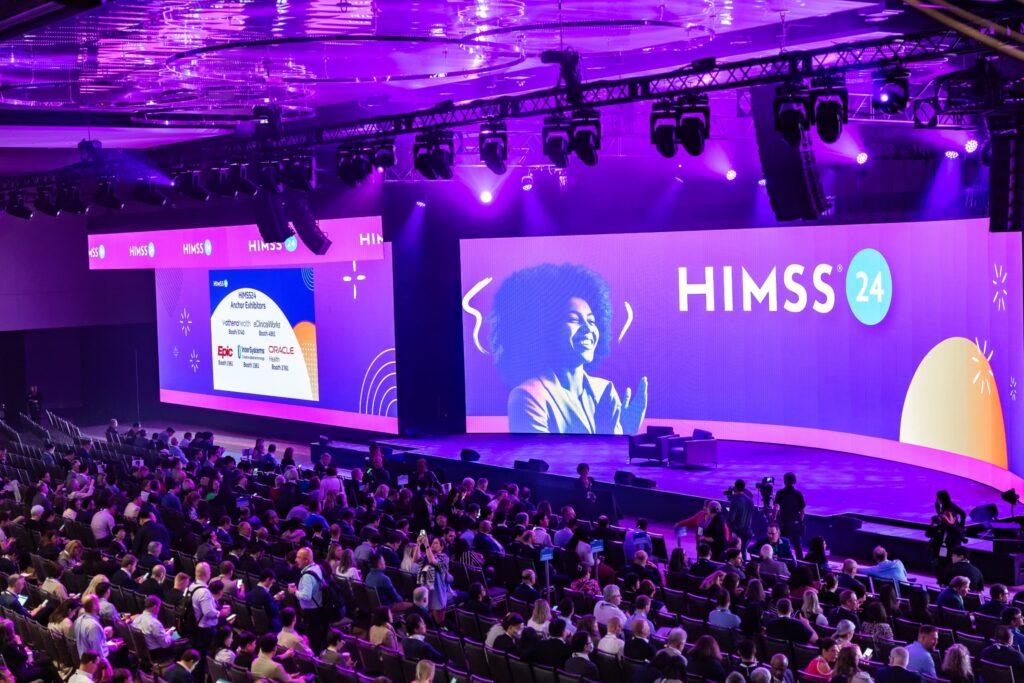
Q: What creative trends should I know about?
Today’s events are embracing immersive design — think LED walls that “envelop” your audience, spatial audio design, and hybrid scenic designs that merge digital and physical worlds. Flexible, open park-like design encourages organic networking, and smart lighting designs help shift audience attention during key moments. These trends all point to one thing: Attendees want experiences that feel unique and memorable, not one-size-fits-all.
Q: How can I avoid “Same As Last Year” syndrome?
The risk of a rinse-and-repeat event is falling into routine. That’s why we start by asking: What worked? What didn’t? Then we use attendee insights and behavioral data (often with tools such as behavior mapping) to refresh storytelling, scenic designs, and engagement strategies.
As Michael O’Brien explains:
“Once you understand your goals for the next year, you need to rethink how your message has evolved and how it can be brought to life through new visuals, video, and purposeful content.”
The Bottom Line
Creative production is where storytelling meets technology. It’s not just about making an event run smoothly — it’s about making the experience unforgettable. From thoughtful lighting and immersive environments to data-driven design decisions, creative production helps transform AV from equipment into engagement.
Want to see how we can bring your next event to life?
Get in touch.
